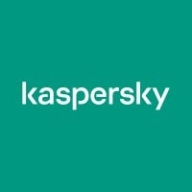

Trend Vision One and Kaspersky Endpoint Detection and Response compete in the EDR space, each with unique strengths. Trend Vision One has the upper hand due to its excellence in centralized visibility and integration capabilities, which are favored by user reviews.
Features: Trend Vision One offers comprehensive features with scalability and strong technical support. It excels in endpoint protection, detection capabilities, and ease of management. Kaspersky provides a high detection rate and valuable behavioral analytics, known for its simple management and consolidation.
Room for Improvement: Users of Trend Vision One wish for better integration with existing tools, streamlined reporting features, and a more intuitive interface. Kaspersky requires stronger cloud integration, more robust support, and reduced resource intensity. Enhanced third-party integrations would benefit both products.
Ease of Deployment and Customer Service: Trend Vision One is flexible in public, private, and hybrid clouds, generally receiving positive feedback for its technical support, although sometimes experiencing support delays. Kaspersky is mostly on-premises, with helpful support, but users express a need for better responsiveness, particularly in complex environments.
Pricing and ROI: Trend Vision One offers competitive pricing with a recent shift to a credit system allowing flexibility. Users report good ROI through time savings and risk reduction. Kaspersky's pricing is considered reasonable, but cloud issues can affect perceived value; it remains cost-effective for reliable protection.
Our company went through a ransomware event, and if Trend Vision One had not stopped it, that could've closed the company's doors.
Trend Vision One has improved our ROI by 30 percent.
Thankfully, we also had cyber security insurance, and the insurance covered the incidents because, through Trend Micro and the implementation of the solution, along with the data it provided, we were able to demonstrate what had happened.
It's not just about high-level support with the chatbot; rather, when an issue occurs, we have the experts on-site and ready to respond swiftly, which is crucial.
Trend Micro supported us throughout the transition from on-prem servers or other vendors, providing top-notch service at all times.
Support responds quickly, and together we’ve been able to solve all challenges in our day-to-day operations.
I’d give scalability a 10 because nearly everything is integrated.
Our growth over the past three years has never caused performance or expansion issues.
I don't think I've encountered any issues with scalability; we're growing steadily, and I believe Trend Vision One can keep up with our demand.
Trend Vision One works exactly as intended and has never hindered our operations, feeling more a collaborator than a roadblock.
The stability is very high.
Stability is critically important for us with Trend Vision One; it is very stable, providing continuous 24/7 support.
Trend Vision One does not initially disclose to customers that they need to purchase additional licenses and pay more for integrations.
The deployment can be complex, and we'd like an easier process, especially when integrating with on-prem and cloud environments.
For XDR threat investigation, there is not enough documentation about how to search for different keywords.
I find the credit model non-transparent—you can't always tell how many licenses apply to which product.
I have seen others that are double or triple the price.
Customers who cannot afford CrowdStrike's pricing can easily opt for Trend Vision One.
The most important features of Vision One include visibility, AI integration, attack pattern analysis, predictive analytics, and centralized visibility and management across protection layers.
The most critical feature of Vision One is that it gives us a single console for threat management.
Its ability to identify unmonitored endpoints and perform log inspection, which establishes operational baselines and detects anomalies, proves invaluable for threat identification.
| Product | Market Share (%) |
|---|---|
| Trend Vision One | 2.5% |
| Kaspersky Endpoint Detection and Response | 1.1% |
| Other | 96.4% |


| Company Size | Count |
|---|---|
| Small Business | 7 |
| Midsize Enterprise | 5 |
| Large Enterprise | 6 |
| Company Size | Count |
|---|---|
| Small Business | 39 |
| Midsize Enterprise | 11 |
| Large Enterprise | 34 |
Kaspersky Endpoint Detection and Response provides robust malware detection, endpoint security, integration with SIEM, control of USB devices, and behavior analysis, deployed on servers, mobile devices, and laptops.
Kaspersky Endpoint Detection and Response aids organizations in scanning environments, blocking sites, handling data transfers, and offering visibility into quarantine systems. Utilizing features such as encryption, machine learning analysis, caching, and automation, Kaspersky ensures enhanced security. The unified agent incorporates antivirus and EDR functionalities, centralizes management, and provides sandbox analysis alongside early-stage threat detection. Automated response capabilities improve efficiency, and the tool's lightweight nature maintains device performance despite high detection rates and advanced threat prevention mechanisms.
What are some of the key features?In industries like finance, healthcare, and retail, Kaspersky Endpoint Detection and Response can be implemented to protect sensitive data and critical systems against advanced threats. Financial institutions may leverage its high detection rates and behavior analysis to secure transactions and customer information. Healthcare organizations can utilize its sandbox analysis and early-stage threat detection to protect patient data. Retail businesses benefit from the enhanced security and efficient automated responses, ensuring customer data remains safe during transactions.
Trend Vision One offers comprehensive protection for endpoints, networks, and email with centralized visibility. It is valued for its attack surface management, real-time threat detection, integrated management, ease of deployment, and user-friendly interface.
Trend Vision One provides a sophisticated security platform combining endpoint, network, and email protection with features like virtual patching and advanced AI capabilities. Its centralized management and integration with platforms like Office 365 and Azure make it an attractive option for organizations needing streamlined workflows and efficient risk management. While it boasts robust integrations and ease of use, enhancements are needed in reporting, tool integration, and reducing false positives. Users call for better support infrastructure, faster response times, and improved threat intelligence capabilities. Despite some complexity, its AI and ML features significantly enhance threat detection and response.
What Features Define Trend Vision One?
What Benefits Should Users Look For?
Trend Vision One is implemented in industries that require endpoint protection, ransomware defense, and incident response, being flexible for both on-premises and cloud environments. It is used to monitor servers, networks, and endpoints, providing features like email protection, behavioral detection, and threat visibility. Organizations benefit from AI and ML, improving their security posture and response capabilities.
We monitor all Endpoint Detection and Response (EDR) reviews to prevent fraudulent reviews and keep review quality high. We do not post reviews by company employees or direct competitors. We validate each review for authenticity via cross-reference with LinkedIn, and personal follow-up with the reviewer when necessary.